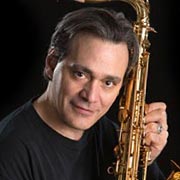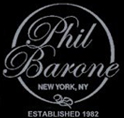Oct 16

Saxophone Buyers Guide
by Phil Barone
Saxophone Buying Guide
You might be in the market for a new saxophone for a number of reasons. Maybe you’re looking for a great beginner’s model for yourself, a family member, or a student. Perhaps you’ve been playing for some time and are considering an upgrade. Or maybe you’re an alto or tenor sax player looking to broaden your range with a second sax-family instrument.
Whatever your reason for buying a new sax, the selection process can be daunting. This guide will help you sort out the possibilities and find the instrument that best meets your needs.
Should I rent or buy?
If you’re shopping for a beginning student, you may be tempted to rent an instrument since your student’s commitment is unproven. There are some good reasons to opt for a purchase instead and at Phil barone Saxophones you can purchase a pro sax for the price of a student saxophone. These include:
- Long-term rental fees can add up quickly. A very playable student-level saxophone can often be purchased for less than the cost of a year’s rental.
- A well-chosen student instrument that is well cared for will retain its value and usually return a substantial part of its purchase price when sold used or traded in for an intermediate saxophone.
- Rental instruments may be a bit worse for wear with nicks, dents, and scratches. You’re also liable for any damage on a rented saxophone.
The Saxophone: A Versatile Family of Instruments
Since its invention by Belgian instrument maker Adolphe Sax in 1840, saxophones have gone on to become perhaps the most-featured wind instrument in both pop and jazz. Catapulted to prominence in the popular consciousness by virtuosos like John Coltrane, Sonny Rollins, and Charlie Parker, the saxophone also helped define the rock ‘n’ roll sound early on, and it still finds itself equally at home in a nightclub, at a rock concert or in the symphony hall. The wailing saxophone of Clarence Clemons Jr. helped shape the muscular sound of Bruce Springsteen’s E Street Band.
Saxophones have enormous versatility. From the gruff honking tones of the baritone sax to the warm and mellow tenor sax sound, to the bright and articulate alto and soprano saxophones, these instruments cover a wide range of pitches and conjure musical moods that range from raucous to restful. You’ll hear saxophones and their distinctive voicings making huge contributions in countless genres including R&B, soul, reggae, salsa, pop, and of course, jazz. They’re also an important part of the wind section of orchestras and marching bands and continue to be among the most popular instruments for budding elementary, high school and college musicians.
Some advanced players learn to be proficient with a number of different voicings. However, many saxophonists hone their skills on one particular saxophone type, developing their own, distinct solo voice.
It’s important to decide which saxophone is right for you. We will explore some characteristics of each of the most popular voicings and discuss some buying considerations for each.
Alto saxophones
The alto saxophone—tuned to Eb, two-and-a-half steps higher than the tenor saxophone—is far and away the most common starter instrument in the saxophone family. Its more compact key layout and need for a little less air make it a solid choice for the younger student. In elementary and high schools, altos typically represent the largest share of the saxophone section.
Other factors making the alto a popular first saxophone is its generally lower cost as well as the wealth of classical repertoire written for the instrument. Moreover, most of the skills that will be learned on the alto are readily transferable to other saxophones.
Intermediate and professional players looking to expand their on the skills on the saxophones would do well to consider the alto sax as well. Even jazz players who have little interest in the alto’s status as a classical mainstay will find a lot to love—many jazz greats have found their signature sound in the instrument’s higher range. Charlie Parker, whose fleet-fingered technique and inventive phrasing still sets the standard for modern jazz players, helped shape the sound of bebop nearly exclusively playing an alto sax.
Even though the cost of an alto can be lower, it’s important to remember that craftsmanship and materials are critical to the instrument’s tone, intonation, playability, and durability. While these factors might seem less important for those who are just starting out, just the opposite is true. Keep in mind that an instrument that doesn’t stay in tune, is difficult to play, or breaks easily can quickly discourage a student from progressing on the saxophone and enjoying their experience.
Tenor Saxophones
The tenor saxophone is the one most closely associated with jazz players, as it is a mainstay in that genre. It is tuned to Bb and has the familiar, curved body style. Since it is not as large or heavy as the baritone or bass sax, the tenor is somewhat easier for young beginners to play. However, with its relatively large, curved shape, it still is quite susceptible to damage, so it’s important to make sure the body is built from durable materials like the Phil Barone horns are.
Bass and Baritone Saxophones
Although there are saxophones capable of producing even lower frequencies, bass and baritone saxophones are the lowest-pitched instruments in the saxophone family that you will find commonly played. The bass models are tuned to Bb, one octave below the tenor sax. They are very large and almost always played in a seated position. While it’s less common to hear bass saxophones in pop or jazz music, you can find them in classical arrangements or as part of saxophone ensembles. So while their use is rarer, you might find your skills in high demand if you can learn to play the bass saxophone proficiently.
Baritone saxophones, on the other hand, make a regular appearance in several types of music. They are often used in classical, and a number of jazz players have incorporated them as a primary or secondary instrument for a distinct solo sound. Their honking, deep tones continue to be an important part of the sound of old-school R&B and rock ‘n’ roll.
Baritone saxophones are tuned to Eb, two-and-a-half steps higher than the bass saxophone’s tuning.
For players who are just starting out, bass or baritone saxophones have the advantage of being relatively mobile, compared to other bass-clef brass and woodwinds such as tubas. However, they can sometimes be difficult for younger players to reach the complete range of keys, particularly with bass saxophones.
Baritone saxophones are often played standing, using a strap to help the player position this larger instrument. With their large bodies, baritones are particularly prone to taking some damage, so it’s important to look for a model that is built for durability—typically one made from quality lacquered brass. With bass saxophones or baritones that you plan to be playing in a seated position, it also might be wise to look for a model that includes a sturdy floor peg, as this will support the instrument and protect against damage from contact with the floor.
Soprano Saxophones
Like the alto, the soprano saxophone can be a somewhat less costly instrument than other members of the saxophone family. This is in large part because its smaller body requires less material to construct. However, it’s important that you don’t base your decision to pick up a soprano sax on cost alone, especially if you are a beginner. Because the soprano sax is a smaller, higher-pitched instrument than its alto cousin, it can be a considerably more difficult for a beginning player to produce a good sound from. Achieving good intonation and staying in in tune are skills that usually develop somewhat more slowly in soprano sax players.
That said, the soprano saxophone is an excellent choice for those who want to produce a rich, full sound in the higher registers. The soprano is tuned to Bb, two-and-a-half steps higher than the alto, and it fits in particularly well with orchestras and concert bands. Notable jazz players such as John Coltrane have included the soprano saxophone in their repertoire as a means of expanding their tonal coloration options.
Although soprano saxophones are more typically built with a straight body, curved instruments are also available for those who prefer them. You can find soprano saxophone models in both styles for players of all levels at Phil Barone Saxophones.


